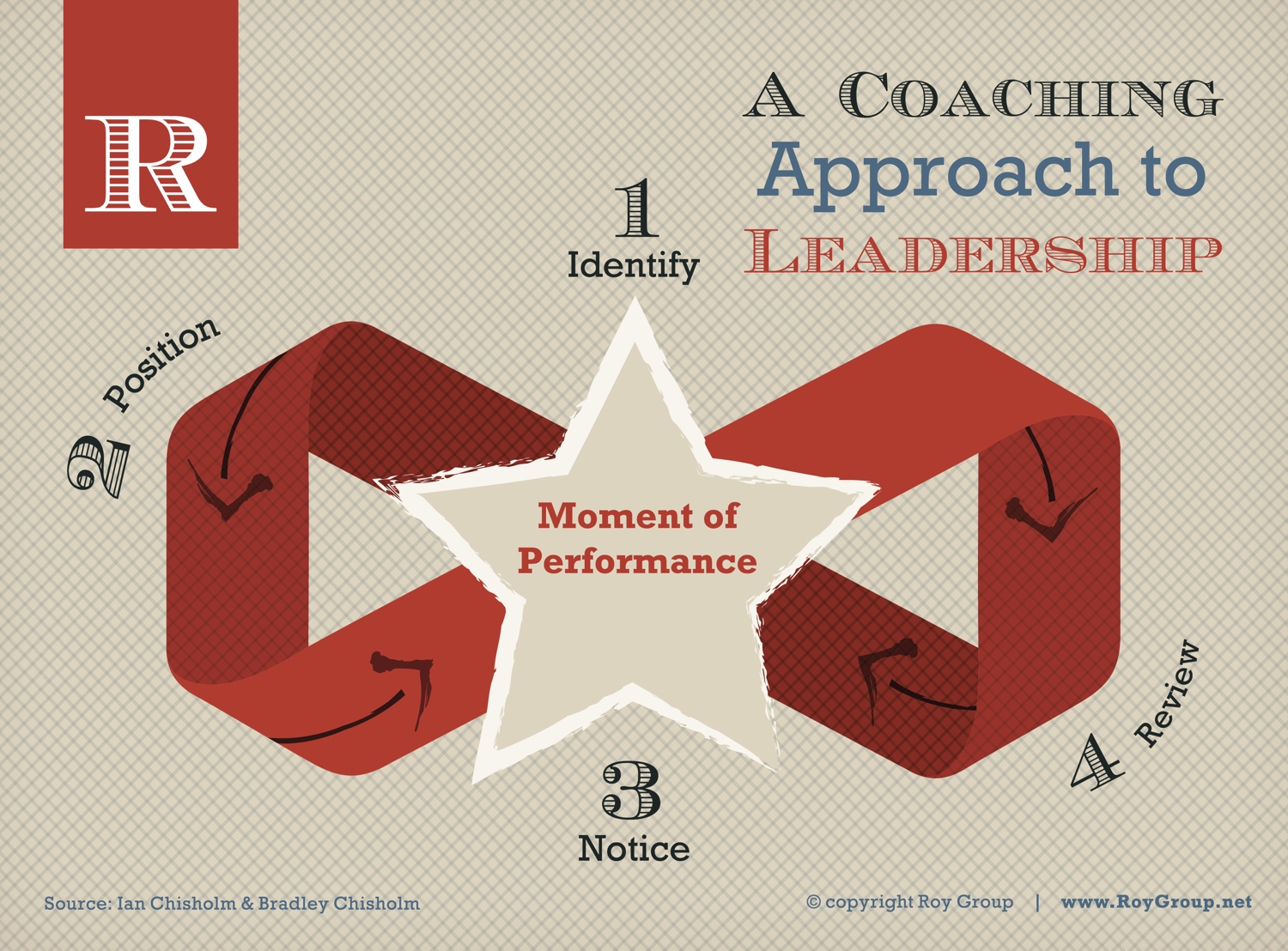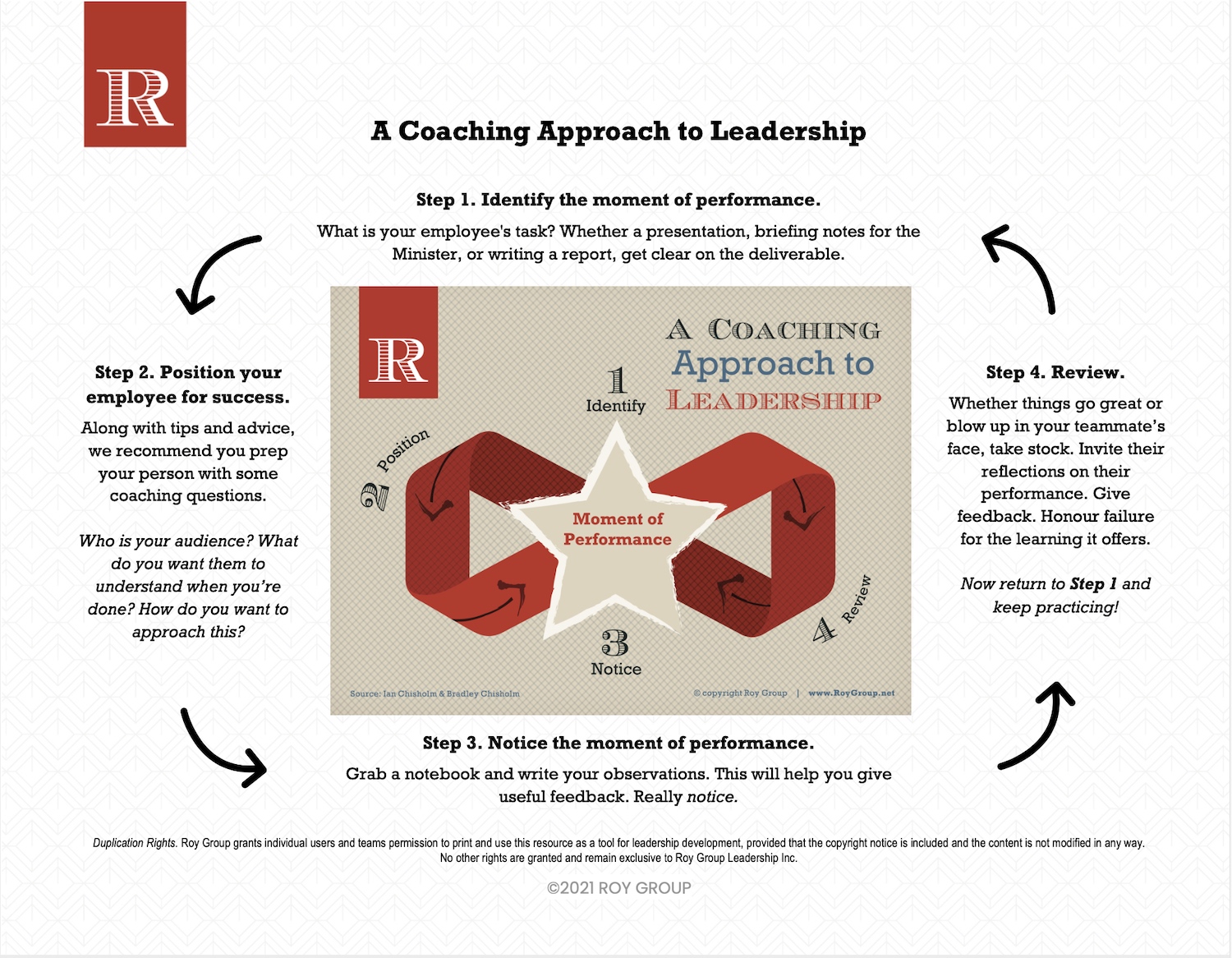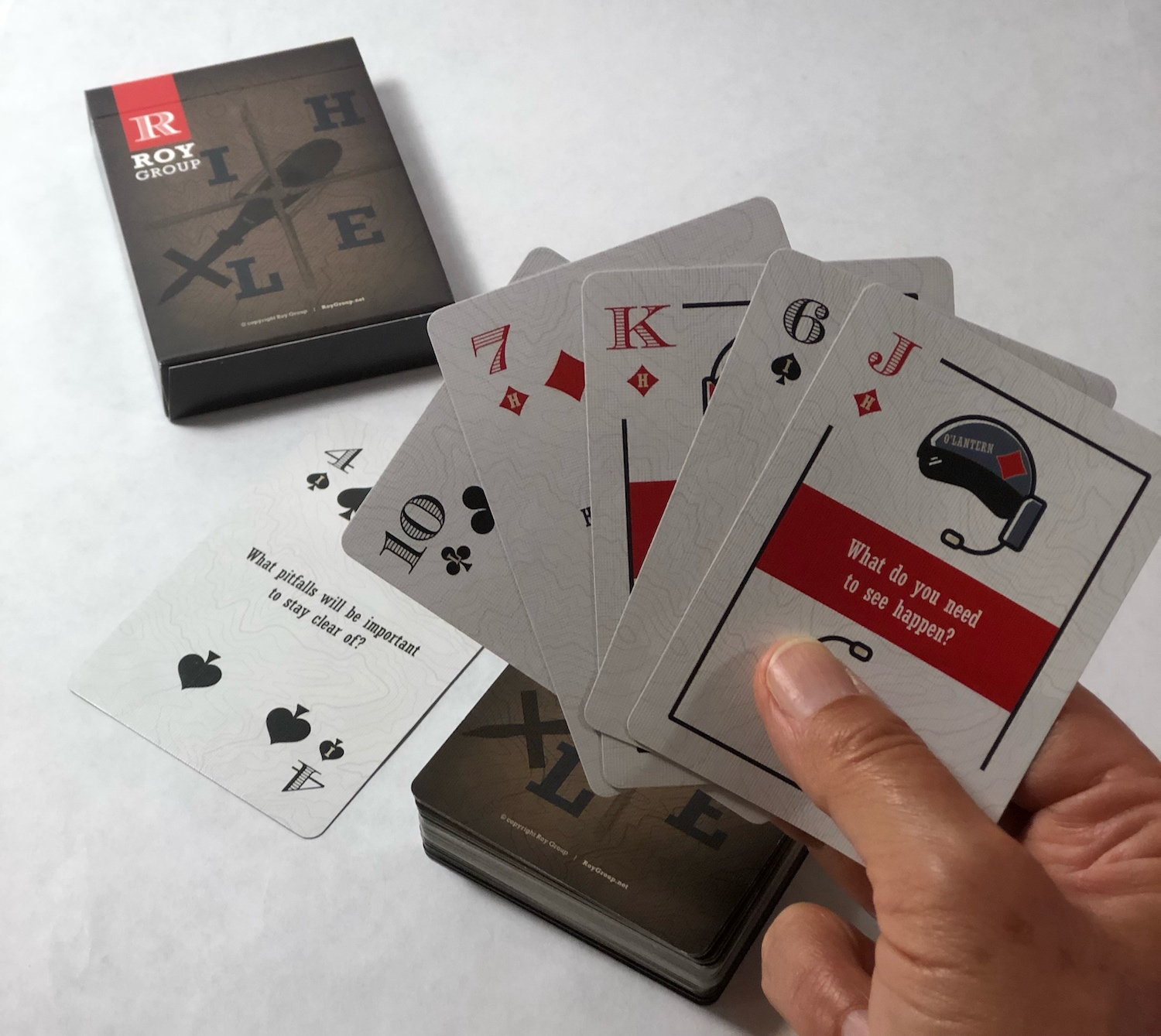
Steps To Building A Coaching Culture
There’s a lot of talk about the shift toward coaching cultures in organizations. This is a good thing. Roy Group has been ready for this for a long time. But what does “a coaching approach” really mean?
Our definition of coaching is the intentional positioning of others to perform at incrementally higher standards, to learn more from their experience as it emerges, and to be increasingly engaged in their endeavours.
Let’s put it into a story so you can see all the parts at work.
Step 1: Identify the moment of performance.
Say a relatively junior staff member, Maria, has been asked to give a presentation to a group of stakeholders.
Step 2: Position for success.
As Maria’s manager, you want to set her up for success, right? You’ll likely give some tips and advice. But you’ve also got an opportunity to dive a little deeper with some good coaching questions:
- What do you want to accomplish here?
- Who are the people involved?
- What messages do people need to understand by the end of the session?
Your questions will spur some reflection and planning in Maria’s mind, and help clarify outcomes.
Step 3: Pay attention to the person’s performance. Notice.
Ideally, this is where you sit in the corner to observe. Notice your team member’s performance, bringing your full attention to how things unfold. Take notes.
Sometimes your direct report will nail it. But for the sake of fully walking you through the process, let’s say Maria’s presentation doesn’t go super well. She gets tongue-tied from stage fright, and her voice shakes all over the place. She doesn’t nail the messaging. The session ends up being a five out of ten.
And Maria? She’s embarrassed and worried about what you’ll think.
Step 4: Review, note the learning, plan for next time.
As a boss, you could conclude that Maria is no good at doing public presentations and decide to give her other jobs instead. But this is a key moment. You want to build capacity in your organization, so use that failure for the information it gives you. Our organizations tend to be failure-averse. But that’s misguided thinking, because failure is an awesome teacher.
Help Maria understand that learning from her attempt → error → failure sequence is exactly what we’re supposed to do as humans. After all, it took you and me a few times to learn how to ride a bike, right? To learn how to write code in Python. To chair an effective meeting. To speak Spanish, to meditate, to eat with chopsticks…
We learn through practice.
So you could get curious about what got in the way for Maria. Invite her to unpack her own experience of herself in that presentation, and then give her some helpful feedback from what you observed. Find out what she needs in order to perform better next time. Maybe she needs to practice in front of a mirror, or maybe she needs to change the way she scaffolds the learning. Maybe she needs to slow down, and harness the power of a good pause.
Then position her to do it again.
This is the coaching approach to leadership.
We conceptualize the coaching approach as a möbius loop, in reflection of continuous improvement. If you practice coaching your direct reports this way, over time you are going to grow those individuals’ accountability, responsibility and ability to make decisions on their own. This takes the pressure off your shoulders to get everything right.
This is what we mean by “building the capacity of other people”.
We’ve built our Coaching Approach to Leadership downloadable resource to make it easy for you to remember and practice the stages. Try it out in your team, and let us know how it goes. And keep at it. Practice does magical things.
Roy Group tools for great leadership |
|
|---|---|
 |
 |
| Download this resource as a quick reminder of the steps. Share it with a peer. | We’ve built a bank of seriously great coaching questions into our HELI deck. Visit Shop Roy Group. |
